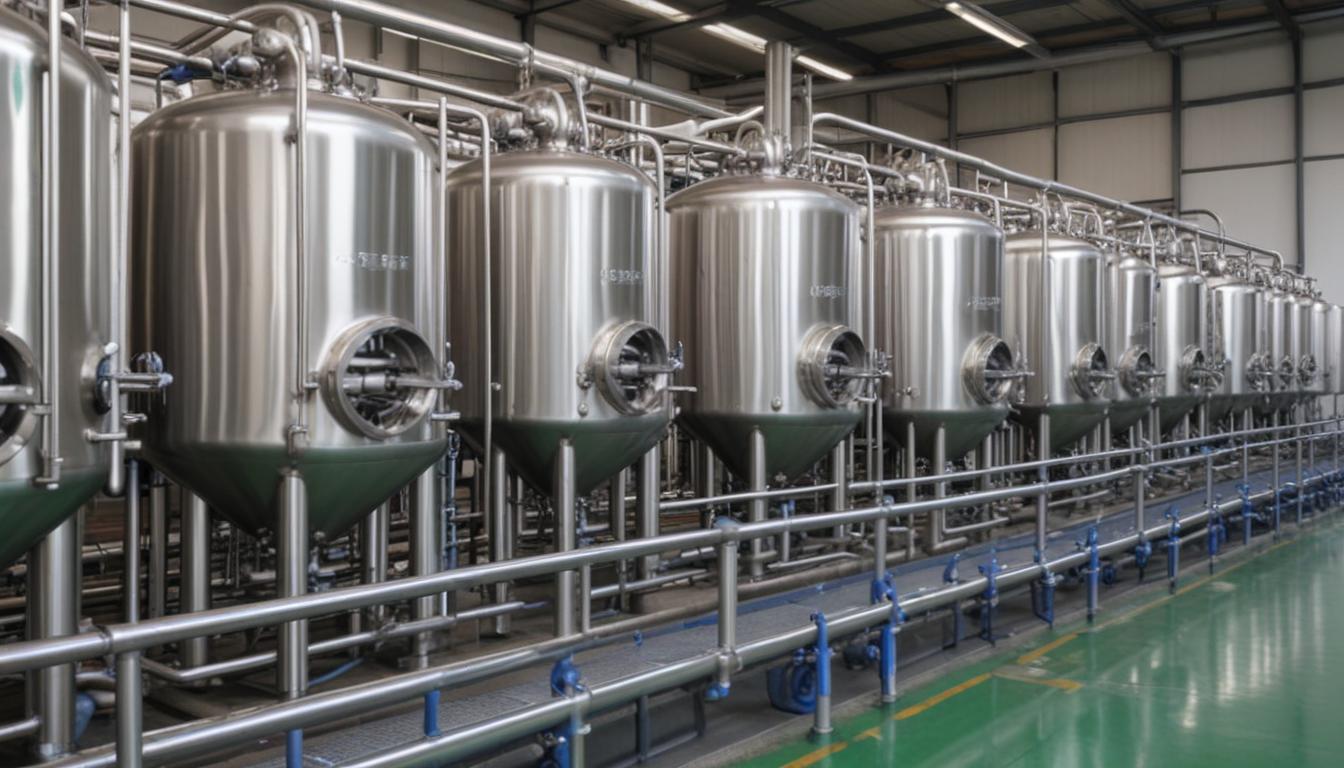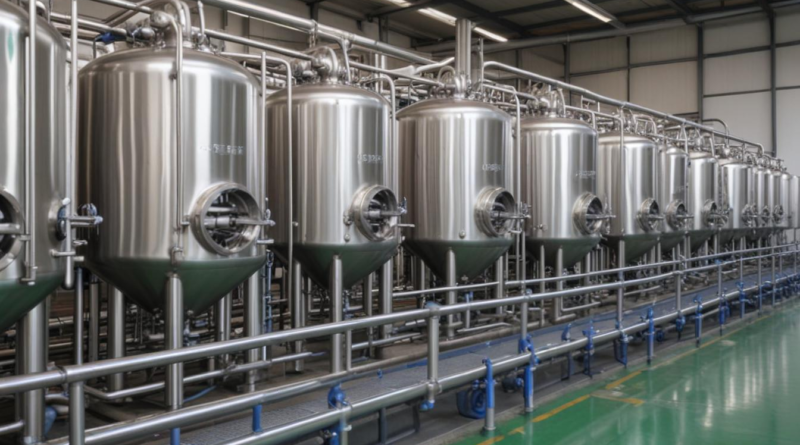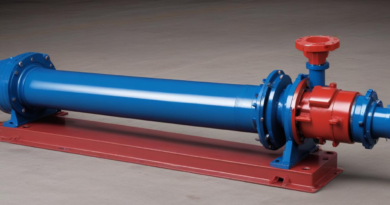pumps used in alcoholic beverage production
In the production of alcoholic beverages, selecting the appropriate pumps is crucial to ensure efficiency and product quality. Various types of pumps are employed, each suited to specific stages and requirements within the production process. Below is an overview of the primary pump types used in this industry:
| Pump Type | Description | Applications |
|---|---|---|
| Centrifugal Pumps | Utilize rotational energy to move fluids by converting kinetic energy into flow. | Mainly used for transferring large volumes of liquid, such as wort or wash, between tanks. |
| Positive Displacement Pumps | Move fluids by trapping a fixed amount and forcing it through the system. | Ideal for precise dosing and handling viscous liquids like syrups and concentrates. |
| Peristaltic Pumps | Operate by compressing and releasing a flexible tube, creating a pumping action. | Used for gentle handling of sensitive liquids, such as fermenting beverages and additives. |
| Screw Pumps | Use one or multiple screws to transport fluids along the axis of rotation. | Suitable for handling high-viscosity liquids and ensuring minimal shear, preserving flavor profiles. |
| <strong diaphragm Pumps | Employ a diaphragm that moves back and forth to displace fluid. | Effective for sterile environments and applications requiring precise flow control. |
Each pump type offers specific advantages depending on the applications within the production line. Factors such as fluid viscosity, flow rate, and the need for sanitary conditions dictate the optimal choice. Additionally, some processes may require the combination of multiple pump types to achieve the desired outcome efficiently.
- Centrifugal Pumps: Best for high-flow, low-viscosity liquids.
- Positive Displacement Pumps: Preferred for accurate flow rates and handling thicker liquids.
- Peristaltic Pumps: Ideal for gentle dosing and maintaining product integrity.
- Screw Pumps: Suitable for transferring sticky or highly viscous materials without degradation.
- Diaphragm Pumps: Used in applications requiring contamination-free transfer and precise control.
Understanding the distinct characteristics and suitable applications of each pump type allows producers to optimize their processes, maintain product consistency, and enhance overall operational efficiency.
selection criteria for beverage pumps
Selecting the appropriate pump for alcoholic beverage production involves evaluating several critical factors to ensure optimal performance and product quality. Key selection criteria include:
Fluid Characteristics
- Viscosity: The thickness of the liquid affects the type of pump required. High-viscosity liquids, such as syrups, demand pumps like positive displacement or screw pumps that can handle thicker fluids without excessive strain.
- Corrosiveness: Alcoholic beverages can vary in acidity and may contain additives that are corrosive. Pumps constructed from corrosion-resistant materials, such as stainless steel, are essential to prevent contamination and prolong pump life.
- Temperature: Fermentation and storage processes may involve a range of temperatures. Pumps must be capable of operating efficiently across the expected temperature spectrum without degrading materials or performance.
Flow Rate and Capacity
Determining the required flow rate is crucial for maintaining production efficiency. Pumps must be capable of handling the necessary volume without causing bottlenecks. Factors to consider include:
| Flow Rate | Suitable Pump Types |
|---|---|
| High Flow | Centrifugal Pumps, Screw Pumps |
| Low to Medium Flow | Peristaltic Pumps, Positive Displacement Pumps |
Hygienic Design and Compliance
Maintaining sanitary conditions is paramount in beverage production to prevent contamination and ensure product safety. Selection criteria should include:
- Material Construction: Pumps should be made from food-grade materials, such as stainless steel, that are easy to clean and resistant to microbial growth.
- Sanitary Standards: Compliance with industry standards (e.g., 3-A Sanitary, EHEDG) ensures that the pump design minimizes dead zones and facilitates thorough cleaning.
- Seal Integrity: Proper sealing mechanisms prevent leaks and cross-contamination between different stages of production.
Energy Efficiency
Energy consumption directly impacts operational costs. Pumps with high energy efficiency can significantly reduce power usage, especially in continuous production environments. Considerations include:
- Motor Efficiency: Selecting pumps with high-efficiency motors reduces electricity consumption.
- Variable Speed Drives: Pumps equipped with variable speed drives can adjust flow rates based on real-time demand, optimizing energy usage.
Maintenance and Reliability
Reliable operation minimizes downtime and maintenance costs. Critical factors include:
- Ease of Maintenance: Pumps designed for easy access to components facilitate quicker repairs and routine maintenance.
- Durability: High-quality materials and robust construction extend the pump’s lifespan, especially in demanding production environments.
- Availability of Spare Parts: Ensuring that replacement parts are readily available reduces downtime in case of failures.
Cost Considerations
Balancing initial investment with long-term operational costs is essential. Factors to evaluate include:
- Purchase Price: The upfront cost of the pump should align with the budget while meeting performance requirements.
- Total Cost of Ownership: Consider long-term expenses such as energy consumption, maintenance, and potential downtime when assessing the overall cost.
Compatibility with Existing Systems
Ensuring that the selected pump integrates seamlessly with current production infrastructure is vital for smooth operations. Key aspects include:
- Connection Interfaces: Matching the pump’s inlet and outlet sizes with existing piping systems prevents the need for extensive modifications.
- Control Systems: Compatibility with existing automation and control systems facilitates efficient operation and monitoring.
By meticulously evaluating these selection criteria, producers can choose the most suitable alcoholic beverage pumps that enhance efficiency, ensure product quality, and support the overall production process.
installation and integration
Proper installation and seamless integration of pumps into the alcoholic beverage production line are essential to ensure optimal performance and maintain product integrity. The following considerations are critical when installing and integrating alcoholic beverage pumps:
Planning and Preparation
- Site Selection: Choose a location that allows easy access for maintenance and minimizes the distance for fluid transfer to reduce pressure losses.
- Layout Design: Design the layout to accommodate the pump type, ensuring space for installation, operation, and future expansions or upgrades.
- System Compatibility: Verify that the selected pump is compatible with existing equipment, including tanks, piping, and control systems.
Positioning and Mounting
Proper positioning and secure mounting are crucial for the efficient operation of pumps.
| Consideration | Details |
|---|---|
| Alignment | Ensure the pump is aligned correctly with the piping system to prevent undue stress on connections and reduce vibration. |
| Foundation | Use a stable foundation to support the pump’s weight and absorb vibrations, enhancing longevity and reducing maintenance needs. |
| Accessibility | Position the pump for easy access to critical components, facilitating routine inspections and maintenance tasks. |
Electrical and Control Integration
Integrating pumps with the facility’s electrical and control systems ensures synchronized and automated operations.
- Power Supply: Verify that the electrical infrastructure meets the pump’s voltage and power requirements. Use appropriate wiring and protection devices to prevent electrical faults.
- Control Systems: Integrate pumps with existing automation systems for monitoring and control. Utilize programmable logic controllers (PLCs) or other control units to regulate pump operations based on production needs.
- Safety Interlocks: Implement safety features such as emergency shut-offs and alarms to protect both equipment and personnel in case of malfunctions.
Piping and Connection
Secure and hygienic piping connections are vital for maintaining product quality and operational efficiency.
- Material Selection: Use food-grade piping materials, such as stainless steel, to prevent contamination and ensure easy cleaning.
- Sealing and Gaskets: Employ high-quality seals and gaskets to prevent leaks and maintain sanitary conditions throughout the system.
- Flow Direction: Adhere to the manufacturer’s guidelines regarding the correct flow direction to avoid pump damage and ensure optimal performance.
Sanitary Installation Practices
Maintaining sanitary conditions during installation is paramount in alcoholic beverage production.
- Cleanliness: Ensure all components are thoroughly cleaned and sanitized before installation to prevent microbial contamination.
- Hygienic Design Compliance: Follow industry standards (e.g., 3-A Sanitary or EHEDG) to minimize dead zones and facilitate effective cleaning processes.
- Material Handling: Avoid introducing contaminants by using clean tools and handling procedures during installation.
Testing and Commissioning
After installation, comprehensive testing ensures that the pump operates as intended within the production system.
- Leak Testing: Check all connections for leaks to maintain product integrity and system efficiency.
- Performance Verification: Assess the pump’s performance parameters, such as flow rate and pressure, to ensure they meet the specified requirements.
- System Integration: Validate the integration with other system components, ensuring seamless communication and operation within the production line.
Training and Documentation
Providing adequate training and maintaining detailed documentation supports effective pump operation and management.
- Operator Training: Train personnel on the proper operation, monitoring, and basic troubleshooting of the pumps to ensure smooth production processes.
- Maintenance Manuals: Supply comprehensive documentation, including maintenance schedules and procedures, to facilitate ongoing upkeep and issue resolution.
- System Documentation: Maintain detailed records of the pump installation and integration, including diagrams and specifications, to aid in future modifications or repairs.
By meticulously addressing these installation and integration aspects, producers can ensure that their alcoholic beverage pumps operate efficiently, maintain high product quality, and integrate seamlessly into the overall production system.
maintenance and troubleshooting
 Regular upkeep of alcoholic beverage pumps is essential to ensure their longevity, efficiency, and the consistent quality of the final product. Implementing a structured maintenance and troubleshooting program can minimize downtime and prevent costly disruptions in the production process. Below are key aspects to consider for effective maintenance and troubleshooting:
Regular upkeep of alcoholic beverage pumps is essential to ensure their longevity, efficiency, and the consistent quality of the final product. Implementing a structured maintenance and troubleshooting program can minimize downtime and prevent costly disruptions in the production process. Below are key aspects to consider for effective maintenance and troubleshooting:
Routine Maintenance Procedures
Maintaining pumps regularly helps identify and address potential issues before they escalate. Essential routine maintenance tasks include:
- Inspection: Conduct visual and functional inspections of pumps to detect signs of wear, leaks, or unusual noises.
- Cleaning: Ensure all pump components are clean, especially in sanitary applications, to prevent contamination and microbial growth.
- Lubrication: Regularly lubricate moving parts as per manufacturer recommendations to reduce friction and wear.
- Seal and Gasket Replacement: Inspect seals and gaskets for integrity and replace them if signs of deterioration are present.
- Alignment Checks: Verify that the pump is correctly aligned with connected machinery to prevent undue stress and vibrations.
Common Issues and Solutions
Understanding typical problems that can arise with beverage pumps aids in quick resolution. Common issues include:
| Problem | Possible Cause | Solution |
|---|---|---|
| Reduced Flow Rate | Clogged impeller or filter | Clean or replace the impeller and filter regularly to maintain optimal flow. |
| Unusual Noise | Misalignment or worn bearings | Realign the pump and replace bearings if necessary to eliminate noise and prevent damage. |
| Leakage | Damaged seals or loose connections | Inspect and replace faulty seals and tighten connections to stop leaks. |
| Overheating | Insufficient lubrication or blocked cooling pathways | Ensure proper lubrication and clear any blockages in cooling systems to prevent overheating. |
| Vibrations | Imbalanced rotating parts or poor mounting | Balance rotating components and secure pump mounting to reduce vibrations. |
Preventive Maintenance Strategies
Implementing preventive measures can significantly extend the life of pumps and reduce unexpected failures. Key strategies include:
- Scheduled Maintenance: Develop a maintenance schedule based on manufacturer guidelines and production demands to perform regular checks and servicing.
- Condition Monitoring: Utilize sensors and monitoring systems to track pump performance indicators like vibration, temperature, and flow rates, enabling early detection of anomalies.
- Spare Parts Inventory: Maintain an inventory of critical spare parts to ensure quick replacements and minimize downtime during repairs.
- Training Personnel: Ensure that maintenance staff are well-trained in pump operations, maintenance procedures, and troubleshooting techniques.
Troubleshooting Guidelines
Effective troubleshooting involves a systematic approach to identify and resolve pump issues. Follow these steps for efficient problem-solving:
- Identify the Symptom: Clearly define the issue, such as reduced flow, unusual noises, or leaks.
- Gather Information: Collect data on recent operating conditions, maintenance history, and any changes in the production process.
- Analyze Possible Causes: Based on the symptoms, determine potential causes using knowledge of pump types and their applications.
- Implement Solutions: Apply the appropriate corrective actions, such as cleaning, realignment, or part replacement.
- Verify Resolution: Test the pump after repairs to ensure that the issue has been fully resolved and that normal operation is restored.
- Document the Incident: Record the problem, actions taken, and outcome to aid in future troubleshooting and maintenance planning.
Utilizing Maintenance Management Systems
Adopting a computerized maintenance management system (CMMS) can enhance the efficiency of maintenance operations. Benefits include:
- Scheduling: Automate maintenance schedules and reminders to ensure timely servicing.
- Tracking: Monitor maintenance activities, track work orders, and manage inventory of spare parts.
- Reporting: Generate reports on pump performance, maintenance history, and recurring issues to inform decision-making and continuous improvement.
By adhering to comprehensive maintenance and troubleshooting practices, producers can ensure that their alcoholic beverage pumps operate reliably, maintain high performance, and support the seamless production of quality beverages.
innovations in pumping technology
Recent advancements in pumping technology are significantly enhancing the efficiency, reliability, and versatility of pumps used in alcoholic beverage production. These innovations address the specific needs of the industry, focusing on improving performance, ensuring hygiene, and reducing operational costs. Key innovations include:
Smart Pump Technology and IoT Integration
Modern pumps are increasingly incorporating Internet of Things (IoT) capabilities, enabling real-time monitoring and data analysis. This integration allows for:
- Predictive Maintenance: Sensors continuously monitor pump conditions such as vibration, temperature, and flow rates, predicting potential failures before they occur.
- Remote Monitoring: Operators can oversee pump performance from centralized control systems, facilitating timely adjustments and interventions.
- Data Analytics: Collected data can be analyzed to optimize pump operations, improve energy efficiency, and enhance overall production processes.
Advanced Materials
The use of cutting-edge materials in pump construction enhances durability and compatibility with various alcoholic beverages. Innovations include:
- Corrosion-Resistant Alloys: Materials such as high-grade stainless steel and specialized alloys resist corrosion from acidic and alcoholic liquids, extending pump lifespan.
- Non-Toxic Coatings: Advanced coatings prevent contamination and ensure compliance with stringent sanitary standards.
- Lightweight Composites: Utilizing lightweight materials reduces overall pump weight, making installation and maintenance easier without compromising strength.
Energy Efficiency Improvements
Enhancing energy efficiency is a critical focus, driven by the need to reduce operational costs and environmental impact. Key developments include:
- High-Efficiency Motors: New motor designs consume less power while delivering the same or improved pumping performance.
- Variable Frequency Drives (VFDs): VFDs adjust motor speed based on real-time demand, optimizing energy usage and reducing waste.
- Energy Recovery Systems: Systems that reclaim and reuse energy within the pumping process contribute to overall energy savings.
Enhanced Sanitary Designs
Maintaining strict sanitary conditions is paramount in beverage production. Innovations in pump design cater to these requirements by:
- Smooth Internal Surfaces: Minimizing crevices and dead zones to prevent microbial growth and facilitate easy cleaning.
- Quick-Disconnect Fittings: Allowing for rapid assembly and disassembly, reducing downtime during cleaning and sanitization processes.
- Sanitary Seals and Bearings: Utilizing seals and bearings that maintain integrity without introducing contamination risks.
Variable Speed and Adaptive Control
Adaptive control systems enable pumps to respond dynamically to changing production demands. Features include:
- Real-Time Flow Adjustment: Pumps can modulate flow rates instantly to match production requirements, ensuring consistency and reducing overshooting.
- Automated Control Systems: Integration with production lines allows for seamless adjustments based on scheduled or real-time data inputs.
- Energy-Responsive Operation: Pumps can automatically reduce speed during lower demand periods, conserving energy without manual intervention.
Modular and Scalable Pump Systems
Modularity and scalability in pump design offer flexibility and adaptability to varying production scales:
- Modular Components: Allowing for easy upgrades and expansions without the need for complete system overhauls.
- Scalable Configurations: Pumps can be configured to handle different flow rates and volumes, accommodating both small-scale craft production and large industrial operations.
- Interchangeable Parts: Standardized components simplify maintenance and enable quick replacements, ensuring uninterrupted production.
Noise Reduction Technologies
Reducing operational noise enhances workplace safety and comfort. Innovations include:
- Acoustic Insulation: Incorporating sound-dampening materials in pump housings to minimize noise levels.
- Vibration Dampeners: Devices that absorb and reduce vibrations, preventing noise generation and extending pump longevity.
- Optimized Pump Designs: Streamlined geometries and balanced components reduce turbulence and noise during operation.
Integration with Renewable Energy Sources
Aligning with sustainable practices, pumps are being designed to integrate seamlessly with renewable energy systems:
- Solar-Powered Pumps: Utilizing solar energy to power pumps, reducing reliance on conventional energy sources.
- Wind-Driven Systems: Incorporating wind energy to supplement pump operations, particularly in off-grid or remote production facilities.
- Energy Storage Solutions: Integrating batteries and other storage technologies to maintain pump operations during energy fluctuations.
These innovations in pumping technology not only enhance the performance and reliability of alcoholic beverage pumps but also contribute to more sustainable and efficient production processes. By adopting these advanced technologies, producers can achieve higher levels of operational excellence, ensuring consistent product quality and maintaining competitiveness in the market.




